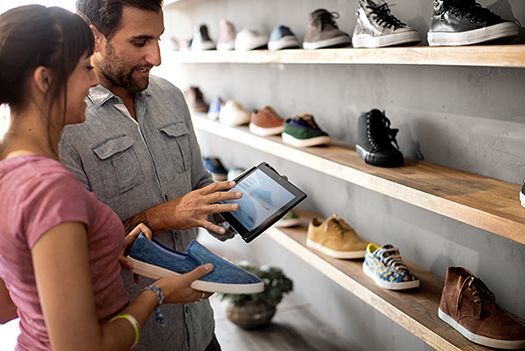Mobile phones don‘t belong at home. As retail platforms continue to innovate, research by O2 and YouGov has found that online and offline retail are no longer separate, individual entities.
O2s research found that retail sales staff are the most likely to be using mobile devices at work with 26% (a quarter) working with laptops, 25% using smartphones and most notably over one in five, (21%) using tablets in the workplace.
While retailers‘ use has been a gradual process, mobile devices have been increasingly popular with consumers in bringing online into the offline retail space.
O2 revealed that 21% of consumers are using their device in store if the item they hoped to purchase is not in stock, consumers use online platforms to find out where else they can buy the item from.
In addition, 19% of shoppers are using their device to visit the retailer‘s website while in store, for example, to get additional product information if sales assistants are occupied, check for customer reviews or to look up alternative options.
In lieu of these shopping habits suggest, retailers could consider, in a similar fashion to Argos, providing customers with in-store devices to browse for more information and purchase out-of-stock products.
Ben Dowd, Business Director at O2 said “The strong continued growth seen in the latest ONS retail sales figures is a fantastic result for retailers, and shows the positive impact that adopting digital strategies can have. Research recently commissioned by O2 found that retail sales staffs are the most likely frontline staff in the private sector to be using devices such as laptops and smartphones for work. Consumers are also embracing technology when shopping with over a fifth using their device in store if the item they came to buy is not in stock, allowing businesses to capture ‘lost sales‘.
It is great to see this use of digital technology boosting retailers‘ sales. It highlights that not only is technology fundamentally transforming the way we behave as shoppers, it is also opening up huge opportunities for retailers to build relationships and ultimately loyalty among customers.”
“This use of technology is also breathing new life into the high street, as recently demonstrated in our Digital High Street Health Index. A number of locations, especially in Northern cities, scored well in key measures of digital health such as digital engagement and availability of 3G. If retailers and high streets are to thrive in today‘s fast-paced ‘always on‘ digital culture, they must put smart, connected technology at their heart, complementing rather than replacing their physical presence” Dowd added.
Talya Misiri


















